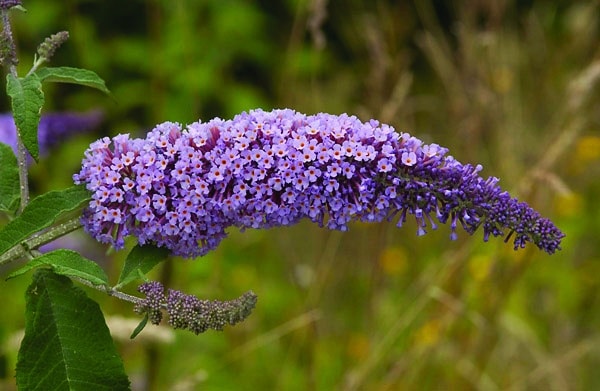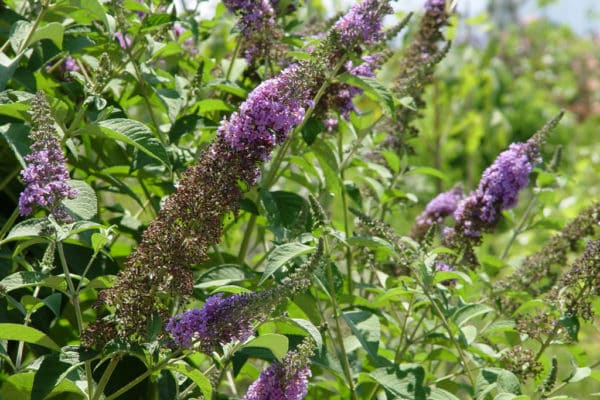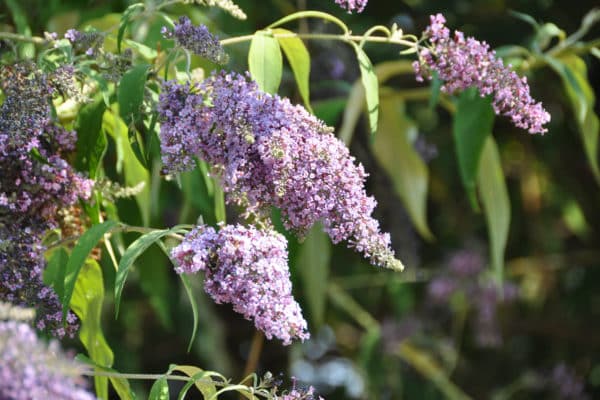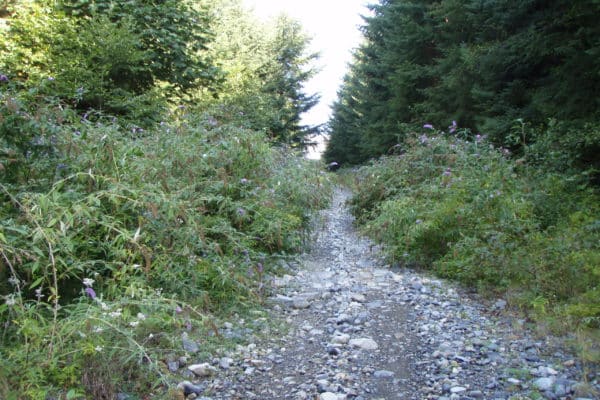Butterfly bush
About This Species
Butterfly bush (Summer lilac, Orange eye) is a semi-evergreen shrub that grows to 5 m tall. This attractive, fast-growing plant has escaped gardens and now rapidly spreads into disturbed, open areas and along coastal forest edges, roadsides, and especially on sunny stream edges and riverbanks where it replaces native plants. Butterfly bush produces lots of seeds and a single flower bunch can produce over 40,000 seeds. Seeds are spread by wind and water and can still grow after being in the soil for many years. Butterflies are often attracted to its flowers.
How to Identify
Butterfly bush can grow up to 5 m tall with as a semi-evergreen shrub with arching branches.
Flowers are a showy long, pointed, spike-shaped light purple to dark purple bunches of tiny individual flowers. Look closely to see the bright orange center of each tiny flower.
It has green-silver leaves on stems that can be 25 cm long.
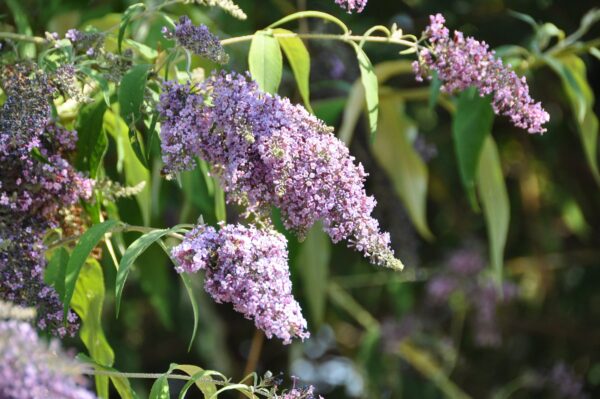
Take Action
Removing Butterfly bush is best done when it first comes into flower but has not yet produced seeds. Small plants can be easily hand-pulled when the soil is moist. Remove larger bushes by cutting the plant at the base. Dig up the roots, then cover the rootstock with a thick plastic bag, or mulch to prevent regeneration. Remove new shoots until the rootstock dies. Do not leave stems on the ground, or they may root.
-
If you need advice about invasive species on your property or you are concerned about reported invasives in your local area, contact your local government or regional invasive species organization.

Plantwise
Learn about best practices
A few non-invasive alternatives to plant instead of Butterfly bush include:
- Blue elderberry (Sambucus cerulea)
- California lilac (Ceanothus spp. and hybrids)
- Lewis’s mock orange (Philadelphus lewisii)
- Meyer lilac (Syringa meyeri)
- Red-flowering currant (Ribes sanguineum)
REPORT TO PROTECT BC’S BIODIVERSITY

Use the app
Observe and report to protect BC’s biodiversity

Report through this website
Use our form to tell us what you’re seeing and where.



